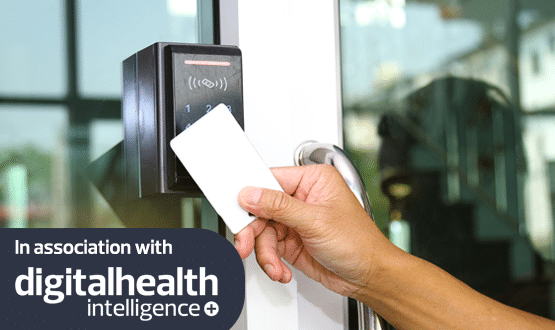Nervecentre launches new patient app at Science Museum event
- 16 November 2023

UK electronic patient record (EPR) provider Nervecentre has unveiled a new patient app, Patientcentre, which it says will help make patients active participants in their own care both in hospital and as outpatients.
Speaking at an event Wednesday at the London Science Museum – where the company also detailed its plans for delivering the next generation of its EPR brand – CEO Paul Volkaerts said the new system was not merely a way of getting patients access to results or information about appointments.
“It’s about putting the patient in the centre of their care and allowing them to participate in that process,” he told an audience in the museum’s IMAX theatre. “And for the clinician, it’s about dealing with the patient within the EPR and not having a separate system to deal with the patient. So all of the interactions from their condition are embedded.”
A Nervecentre spokesman described Patientcentre as an aspect of the broader patient engagement platform that is part of the EPR, rather than integrated with it. Patients will be able to use their NHS login to enter the app, as well as enter information offline, such as blood pressure readings if they are in the garden without a mobile signal.
In addition, Patientcentre will be able to take events that are happening in the EPR to trigger messaging with patients, while using the patient’s response to trigger actions in the EPR, Volkaerts explained.
As an illustration, he used the example of a patient who is prescribed insulin. The clinician can send a leaflet on insulin through the app and ask if they need support for self-administration, and if they answer affirmatively, the EPR can send a task to the pharmacist to go see the patient.
“But’s that’s just a configuration,” Volkaerts added. “It’s up to you what you build. We’ve built a toolkit to allow you to use your ideas and your inspiration to work out how to offer the best care for the patient.”
The next generation EPR
Nervecentre described the London event on Wednesday as a demonstration of the way in which company is aiming to move “beyond the enterprise EPR.” Volkaerts identified four categories of technology that he expects to be “enablers for digital transformation”: cloud scale and agility, allowing all parts of the system to be reached “in a coherent way”; mobile and usability, which will help increase the frequency of staff access to the EPR and, by implication, raise the number of interractions and data collection; patient engagement; and big data and AI.
“We need to move towards this model of care where, as patients move through their pathways, every single person along that pathway is able to participate equally in that care,” he said.
Volkaerts also argued that EPR launches need to move away from the choice between “big bang” and “progressive” deployments and recognise that joining together both models and allow trusts to benefit from the best of both.
“Some people see it as a binary division – that you’re either doing everything in one day that you spent two years planning for, or you’re dribbling technical change on to the user community for a prolonged period of time, perhaps using multiple suppliers.”
Earlier this month, Nervecentre was announced as the preferred EPR supplier for University Hospitals of Derby and Burton (UHDB) and Chesterfield Royal Hospital (CRH). Volkaerts said the model Nervecentre has proposed for that rollout would involve a “big bang” replacement of the trusts’ Meditech and Lorenzo legacy EPR systems, but that a year prior to that point, the company will deploy a suite of functionality.
“The purpose of that is twofold,” he said. “First, to give the hospital some early benefits of the procurement, but more importantly, so that by the time you do the big bang replacement, every single nurse and every single doctor has experience of using the system.”





5 Comments
One would have thought that Nervecentre would at least do a small piece of diligence to see that there wasn’t already a product called PatientCentre in existence?
No?
That’s what confused me too – I am sure that was the name to the existing software (PatientCentre)
Well I saw plenty that was revolutionary. Works out of the box on your phone. Patient facing functionality integrated in the EPR AND class leading UX at a price normal trusts can afford. Built with the NHS for the NHS. A sane approach to interorganisational data sharing. Maybe it was too sensible to appear revolutionary to all?
Sensible could be seen as basic, too basic in this day and age. Unfortunately – buy cheap, buy twice. This is the reason a large number of Trusts are replacing NC. A simple look across recent business cases and the systems to be replaced is quite telling.
Advancements are of course welcomed, but I didn’t see anything revolutionary per se. The multi tenant, ability for the patient to interact with the EPR, AI interaction – it’s all being done elsewhere already.
It’s great to see another supplier working towards this, but difficult to see where NC will be once FD has fizzled out.
The promises of yesterday add to the growing list, many of which will be too far away and late for the market. Decisions will have been made. Worrying decisions for those procuring.
Comments are closed.